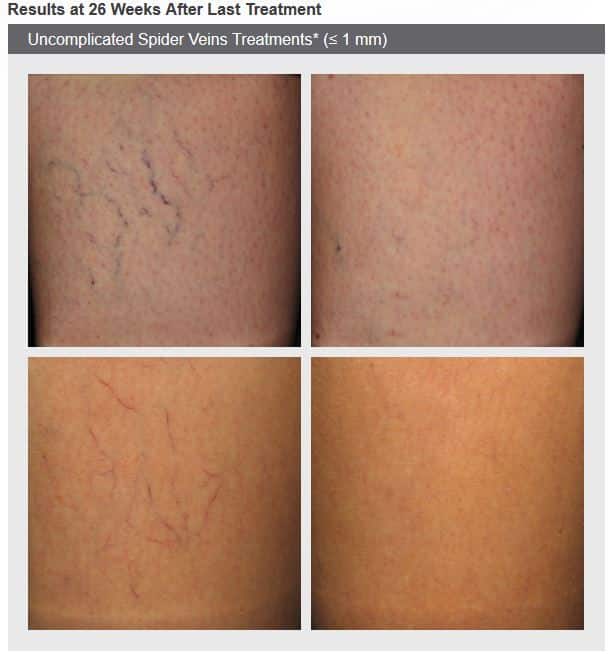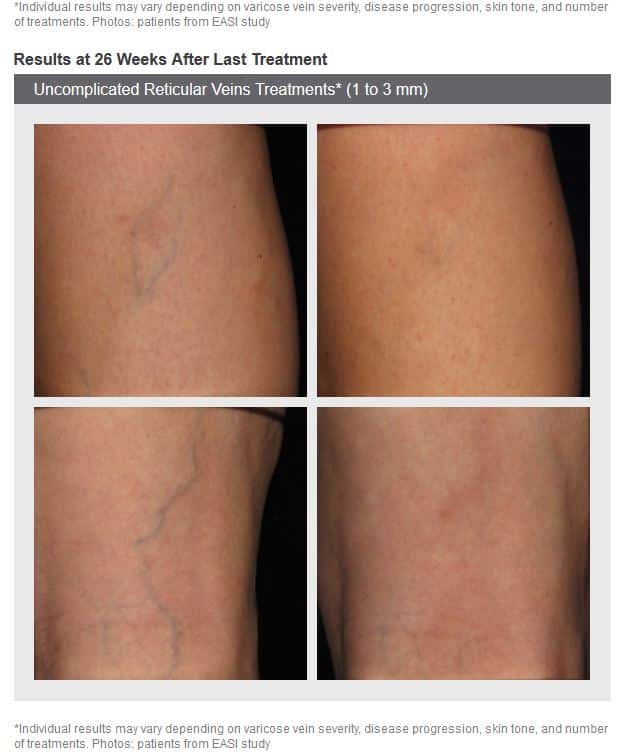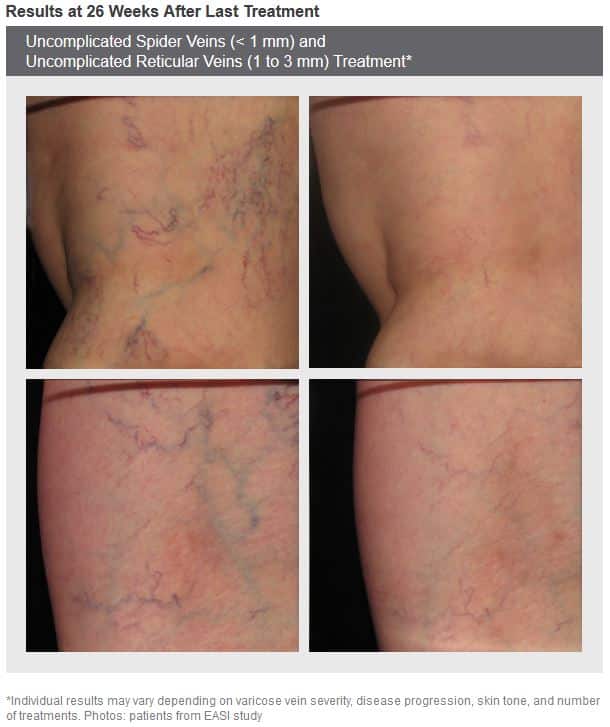Enjoy the freedom to show your legs, with Asclera®
What Is Asclera® (pronounced a skler ah)?
Asclera® (polidocanol) Injection is a prescription medicine that is used in a procedure called sclerotherapy and is administered by a healthcare provider to treat two types of veins:
- Uncomplicated spider veins (very small varicose veins ≤ 1 mm in diameter)
- Uncomplicated small varicose veins (1 to 3 mm in diameter) known as reticular veins
How Does Asclera® Work?
Asclera® is a sclerosing agent that is injected into the vein. It works by damaging the endothelium, the cells lining the inside of blood vessels. This causes blood platelets and cellular debris to attach to the lining of the vessels; eventually, cellular debris and platelets cause the blood vessel to clot. Over time, the clotted vein will be replaced with tissue.
Patient Satisfaction1
- On average, 87% of patients were satisfied or very satisfied with their Asclera® treatment
- Patients were significantly more satisfied with Asclera® than with either sodium tetradecyl sulfate (STS) or placebo (p<0.0001)
What is sclerotherapy?
Sclerotherapy is a minimally invasive procedure done by your healthcare provider to treat uncomplicated spider veins and uncomplicated reticular veins. The treatment involves the injection of a solution into the affected veins.
What are varicose veins?
Varicose veins are large blue, dark purple veins. They protrude from the skin and many times they have a cord-like appearance and may twist or bulge. Varicose veins are found most frequently on the legs.
What are spider veins?
Spider veins are very small and very fine red or blue veins. They are closer to the surface of the skin than varicose veins. They can look like a thin red line, tree branches or spider webs. Spider veins can be found on the legs and face and may cover a small or large area.
What are reticular veins?
Reticular veins can also be known as feeder veins. They are the blue and green veins beneath the surface of the skin.
Reticular veins enlarge because of increased pressure in the vein. They can be caused by heredity. You may have reticular veins alone but you may also have spider veins at the same time.
What causes spider and reticular veins?
Spider and reticular veins can be caused by many factors.
- Heredity. Having a family member with prominent veins may increase the risk of you developing them. Approximately half of the people who get varicose veins have a family history of them.
- Age. The normal wear and tear of aging may cause valves in the veins to weaken and not work as well.
- Gender. Women are two to three times more likely to develop varicose veins than men. Up to half of American women have varicose veins. Changes in hormones due to puberty, pregnancy, menopause, or taking birth control pills may increase a woman’s risk of developing varicose veins.
- Pregnancy. During pregnancy, the growth of the fetus increases the pressure on the veins in the legs. Varicose veins that occur during pregnancy usually improve within 3 to 12 months following delivery.
- Overweight and obesity. Having extra weight on the body can put additional pressure on the veins.
- Prolonged standing or sitting. This is particularly true with legs bent or crossed. When standing or sitting with legs bent or crossed, the veins have to work harder to pump the blood up to the heart.
-
Results at 26 Weeks After Last Treatment
Uncomplicated Spider Veins Treatments* (≤ 1 mm)



